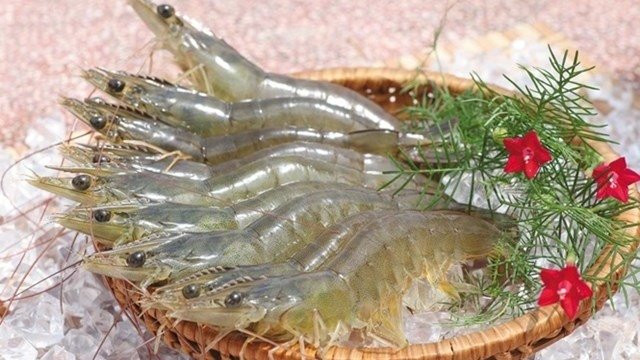
Vietnam currently heads the list of shrimp exporters to the Canadian market, accounting for 29% of Canada’s total shrimp import value in the first nine months of this year.

Canada is the sixth largest importer of Vietnamese shrimp, accounting for 4.3% of Vietnam's total shrimp exports to foreign markets in the first nine months of this year.
According to
the Vietnam Association of Seafood Exporters and Producers (VASEP), Canada
ranks 13th among the world's leading shrimp importers and the country has
posted increasing demand for imports of warm water shrimp from Asian countries
such as Vietnam and India.
Canada imports over 53,000 tonnes of shrimp
each year. The top five leading shrimp suppliers for Canada include Vietnam,
India, China, Thailand and Indonesia respectively.
While Canada reduced imports of shrimps from
Thailand (down 33.5%) in the first three quarters of this year, the country
increased the imports from Vietnam and India, up 5% and 9.4% respectively
compared to the same period last year.
Vietnam and India are close rivals regarding
export to the Canadian market and both Asian countries are entitled to enjoy 0%
import tax on frozen shrimp coded HS 030617.
Canada is the sixth largest importer of
Vietnamese shrimp, accounting for 4.3% of Vietnam's total shrimp exports to
foreign markets in the first nine months of this year. Vietnam's shrimp exports
to Canada have seen continuous positive growth rates since 2016.
Source: NDO
According to data from the Hoa Binh Provincial Party Committee, the industrial production index for the first six months of 2025 is estimated to have increased by 20% compared to the same period last year. This marks the highest year-on-year growth rate for this period since 2020.
In the first six months of 2025, Hoa Binh province’s export turnover was estimated at 1.145 billion USD, marking an 18.11% increase compared to the same period in 2024. Import turnover was estimated at $ 804 million, a 17.15% increase, which helped the province maintain a positive trade balance.
The lives of the ethnic minority farmers in Tan Lac district have gradually improved thanks to the new directions in agricultural production. This is a testament to the collective strength fostered through the professional associations and groups implemented by various levels of the district’s Farmers’ Union.
With the motto the "product quality comes first,” after nearly one year of establishment and operation, Muong village’s Clean Food Agricultural and Commercial Cooperative, located in Cau Hamlet, Hung Son Commune (Kim Boi district), has launched reputable, high-quality agricultural products to the market that are well-received by consumers. The products such as Muong village’s pork sausage, salt-cured chicken, and salt-cured pork hocks have gradually carved out a place in the market and they are on the path to obtaining the OCOP certification.
In the past, the phrase "bumper harvest, rock-bottom prices" was a familiar refrain for Vietnamese farmers engaged in fragmented, small-scale agriculture. But today, a new spirit is emerging across rural areas of Hoa Binh province - one of collaboration, organisation, and collective economic models that provide a stable foundation for production.
Maintaining growing area codes and packing facility codes in accordance with regulations is a mandatory requirement for agricultural products to be eligible for export. Recently, the Department of Agriculture and Environment of Hoa Binh province has intensified technical supervision of designated farming areas and packing facilities to safeguard the "green passport" that enables its products to access international markets.



